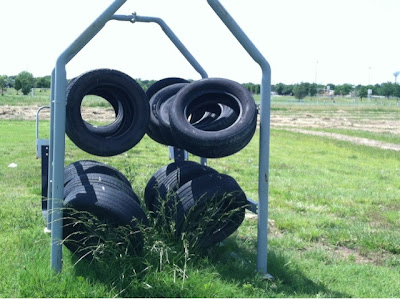Know what sucks? Injury. Injuries keep you from playing. Sometimes they keep you from doing other things, like walking. Oftentimes they're preventable. This article is about preventing them. More specifically, this article is about how I'm trying to prevent my own.
It's hard to analyze your own weaknesses, even when you do it for a living. I can walk through a supermarket and give you a rough overview of almost anyone's potential biomechanical problems: that person has tight hamstrings, or overactive hip flexors, or weak abs; this one has back pain; that woman's knees are going to hurt soon, if they don't already. Usually, I can give you an idea of how I'd help that person address their issues so that she doesn't experience chronic injury or pain in the future.
This doesn't always translate to looking in the mirror and knowing what exercises I need to do to prevent my own injuries. I learned that when I went to see a physical therapist for ASTYM. During my first appointment, he tested my static hip flexor and hip abductor strength using manual pressure. I failed both tests pathetically. I probably should have known that my hips were weak, and I definitely knew which exercises would help, but I wasn't doing them.
I can't see all the things that are wrong with me, but I do know of a few particular problems. These are areas that I can feel; they're right on the edge of trouble, or already cause pain.
S.I. joint
This manifests as a pain in my ass, usually just to the right of the sacrum, sometimes radiating out towards the hip joint. I think that a tight piriformis is the main culprit. It's a problem I see a lot--as in, I see it in almost everyone. I think it comes from the way we drive: right foot on the pedal, hip externally rotated. In people who drive a manual transmission, I see it on both sides. Underactive hip abductors compound the problem. The solution?
- Myofascial release of the piriformis using a foam roller, tennis ball, or lacrosse ball/baseball (if you like pain)
- PNF stretch the piriformis and biceps femoris
- Strengthen the hip abductors (especially the gluteus medius and the gluteus minimus)
- Strengthen the hip internal rotators (especially the pectineus and its synergists)
- Strengthen the tensor fasciae latae, release the IT band
Right knee complex
My right knee is a mess, and it's gotten worse since I started playing rugby. I can feel tension and pain creeping in. Sitting in Virasana hurts. Agnistambhasana hurts. And if I get up after having my knees flexed for a while, they won't straighten all the way. When I do loaded squats, my right knee grinds, like the patello-femoral tendon is gristle-y. This is a big problem. Knees are important for playing sports. I only have two of them. And games like rugby are notoriously hard on them. I need to have strong, supple, stable knees. Right now, I don't. There's a confluence of problems here, I think: tight IT band, gunky patello-femoral tendon, tight and overactive hamstrings and calves. The solution will be neither easy nor comfortable. Here are some of the things I need to work on:
- Fix the right hip. Hip imbalances become knee imbalances.
- Myofascial release of the IT band, gastroc, hamstrings, and quads. Ouch. Maybe I can get a few massages before I try to start this stuff. Foam roller for the IT band and quads, dowel rod for the hamstrings and calves. There will be tears.
- Floss the patello-femoral tendon.
- Strengthen the hip abductors and adductors to balance the kinetic chains and stabilize the knee.
- Stretch the hamstrings and calves. And also everything else.
Plantar fascia
This really shouldn't be a problem. Prevention is critical to avoiding plantar fasciitis, and I know how to prevent it. I make my clients work on prevention. So why am I not doing the work to avoid pain and injury?
- Strengthen the muscles of the foot, especially the flexor hallucis longus (this should also take care of my big toe pain.
- Stretch the gastroc and soleus.
- Myofascial release of the plantar fascia using a tennis ball or golf ball.
It's easy for me to practice passing, kicking, running, tackling . . . I can motivate myself to condition, run sprints, lift weights . . . but I have trouble with stretching, core strengthening, and preventative exercise! Why is that?






















